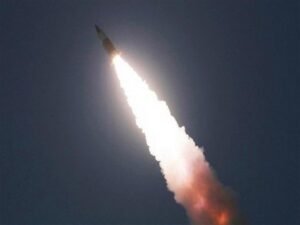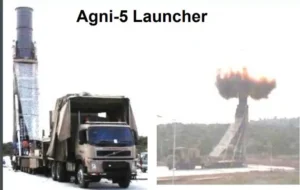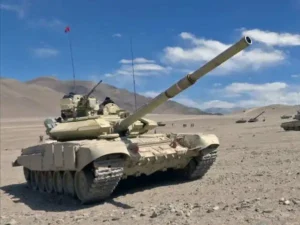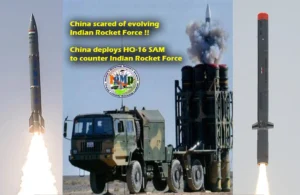The United States’ efforts to narrow the technological gap with China and Russia in the hypersonic program faced a major setback on September 6, as the planned test of the US Army’s Dark Eagle hypersonic missile at Cape Canaveral Space Force Station in Florida was abruptly canceled.
This hypersonic missile, which the US Army is developing in collaboration with the US Navy, is intended to become the first hypersonic weapon within the Army’s arsenal.
The Defense Department stated that it had intended to carry out a flight test at the Cape Canaveral Space Force Station in Florida to advance its hypersonic technology development, but due to pre-flight checks, the test did not take place.
While the statement did not specify the reason behind the test’s cancellation, this decision has prompted concerns about the program’s timeline and whether the Army can achieve its objective of declaring the weapon as initially combat-ready by September 30, which would also mark the Pentagon’s first foray into hypersonic weaponry.
Furthermore, the statement noted that despite the flight test’s cancellation, the department managed to gather valuable data on the functionality of the ground hardware and software, which will play a crucial role in guiding further advancements toward the deployment of offensive hypersonic weapons.

In March, the Office of the Secretary of Defense (OSD) released a statement akin to the current one following the initial decision to cancel the first scheduled Dark Eagle test launch.
At the time, the OSD mentioned that on March 5, the Department of Defense had intended to conduct a flight test from Cape Canaveral Space Force Station to support its hypersonic technology development.
However, due to pre-flight checks, the test did not proceed as planned, with the commitment to delivering hypersonic weapons reaffirmed as a top priority for the Department of Defense.
During a subsequent Congressional hearing, Navy Vice Adm. Johnny Wolfe, the Director of Strategic Systems Programs within the Navy, revealed that automated pre-flight checks had detected a failure to activate a battery, leading to the decision to postpone the test.
He further stated that they are actively investigating the root cause of the test cancellation and will persist in development efforts and additional testing to support the Army’s fielding as soon as the issue is pinpointed and rectified.
Worries Regarding US Army’s Capacity To Meet Missile Deployment Deadline
The United States Army is currently developing the ground-based Dark Eagle weapon system in close cooperation with the Navy.
The Navy intends to utilize the same missiles, designated as Intermediate-Range Conventional Prompt Strike (IRCPS) missiles, aboard its Zumwalt-class destroyers and Block V Virginia-class submarines.
The Navy also carried out a test launch of an IRCPS missile from the Pacific Missile Range Facility in June 2022.
During this test, the missile encountered an in-flight anomaly that hindered data collection for certain segments of the intended flight profile.
However, the Navy promptly identified the root cause of the issue and took corrective measures, as outlined in the report from the Pentagon’s Office of Test and Evaluation, abbreviated as DOT&E.
:quality(70)/cloudfront-us-east-1.images.arcpublishing.com/archetype/I3QDD4RSPNEH5E3UG4TMU5EKPM.jpg)
The Dark Eagle/IRCPS missile comprises two principal components: a rocket booster and an unpowered hypersonic boost-glide vehicle payload situated atop it.
In the operational dynamics of such hypersonic weaponry, the rocket booster is pivotal in propelling the boost-glide vehicle to its optimal speed and altitude before the latter phase is initiated.
Following this separation, the boost-glide vehicle embarks on an autonomous journey towards its target, charting a relatively shallow atmospheric flight trajectory at hypersonic velocities—speeds surpassing Mach 5.
These hypersonic vehicles are engineered with a high degree of maneuverability, enabling them to execute abrupt course changes along their path.
Consequently, these capabilities pose serious challenges for defenders, encompassing not only the task of detecting the incoming threat but also the formidable challenge of attempting to intercept it.
The cancellation of two tests this year and the previous issues experienced last year have cast doubt on the near-term prospects of this joint Army-Navy program.
The Army’s aspiration to achieve an early operational capability with Dark Eagle by the end of this year appears to be growing increasingly uncertain, given the recent test cancellations and challenges encountered during the testing phase.
The slow progress in developing hypersonic weapons is a matter of grave concern for the United States, especially in light of the substantial strides made by its rivals, China and Russia, in this field.
In March, the US Defense Intelligence Agency said that China was at the forefront regarding advancements in hypersonic weapons development, characterized by their high speed, low-altitude flight capabilities, and the potential to carry nuclear warheads.
Therefore, the US Army is eager to adhere to its planned timeline for deploying the hypersonic missile. However, the recent issues encountered in the last two tests cast doubt on whether they can do so.
Source link
#Hypersonic #Program #Faces #Hurdle #Army #Cancels #Test #Dark #Eagle #Missile #Cape #Canaveral








